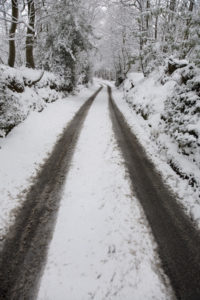Snow Tires With Our Low-Price Guarantee
We Will Beat ANY Competitor’s Written Quote
Or Call Us:
603-945-0968
- We specialize in European & Luxury automotive service.
- Our work comes with a 3 year, 36k mile warranty
- Courtesy loaner cars and shuttles available
- The Wait is OVER! VIP Pickup and Delivery Service
- ASE-certified master technicians
- Same-day service


Or Call Us:
603-945-0968
What Our Customers Say
Very professional, courteous and knowledgeable. Serviced both of our vehicles in a very timely manner. After a long search we have finally found a great auto repair shop.
The staff is friendly, professional and efficient. The service was excellent and carried out within an acceptable time.
We WILL BEAT any competitor’s written quote.
Call or email us and let us help you with your tire services. Give us your tire size and we will email you a quote. We will not be undersold!
Do you need snow tires?
The only thing between you and the road is your tires! Snow tires are engineered to provide superior grip compared to all-season tires. They’re designed to operate below 45 degrees, with “softer” rubber than all-season tires. Utilizing the proper tires will improve the vehicle’s performance during fishtailing, understeering, and oversteering conditions.
To learn more about the difference between standard, all-season tires and snow tires, check out our Facebook live video (don’t worry, the video begins sideways but only for a few seconds):
Tires: Snow vs All Season – Auto Care Corner
John is talking tires in our inaugural live Auto Care Corner segment on Girard At Large.
(And don’t worry – it’s just the first minute of the video that was sideways. #maidenvoyage)Posted by Auto Care Plus on Friday, November 25, 2016
Winter Driving Tips
Owner John Manelas offered the following tips for winter driving during one of his weekly Auto Care Corner appearances on Girard at Large.
We’ve borrowed the following information about snow tires from Wikipedia:
Tire Tread
Attributes that can distinguish snow tires from “all-season” and summer tires include:
- An open, deep tread, whose void ratio between rubber and spaces between the solid rubber is comparatively high
- Shoulder blocks—specialized tread design on the outside of the tire tread to increase snow contact and friction
- A narrower aspect ratio between the diameter of the tire and the tread width to minimize resistance from the plowing effect of the tire through deeper snow
- Hydrophilic rubber compounds that improve friction on wet surfaces
Snow tires are designed to encounter many of the same conditions that summer tires encounter, as well, so they incorporate siping for wet surfaces. Wet-film conditions on hard-compacted snow or ice require studs or chains.
How Snow Tires Work
The compacted snow develops strength against slippage along a shear plane parallel to the contact area of the tire on the ground. At the same time, the bottom of the tire treads compress the snow on which they are bearing, also creating friction. The process of compacting snow within the treads requires it to be expelled in time for the tread to compact snow anew on the next rotation. The compaction/contact process works both in the direction of travel for propulsion and braking, but also laterally for cornering.
The deeper the snow that the tire rolls through, the higher the resistance encountered by the tire, as it compacts the snow it encounters and plows some of it to either side. At some point on a given angle of uphill pitch, this resistance becomes greater than the resistance to slippage achieved by the tread’s contact with the snow and the tires with power begin to slip and spin. Deeper snow means that climbing a hill without spinning the powered wheels becomes more difficult. However, the plowing/compaction effect aids in braking to the extent that it creates rolling resistance.
Tire Guide and Tips: Understanding Your Tire
For example, the number may read P225/70-R15, 89H:
P = Passenger Tire (LT = Light Truck)
- 225 = Overall width of the tire in millimeters
- 70 = Sidewall height (distance from rim to tread) as a percentage of the tread width (known as aspect ratio)
- R = Tire construction, this one is Radial (also, B = Belted Bias, D = Diagonal Bias
- 15 = Represents the size of the wheel in inches
- In this example, the tire has the number 89H. This is the weight capacity of the tire. However, in most cases, you will not see this heading on the sidewall.
- The V and Z rated tires have excellent dry pavement grip/traction but due to their soft rubber compounds, do not have a long life.
- A tread rating indicates how long a tire should last. This figure is written in small letters on the sidewall of your tire. The higher the number, the longer the tire should last. 100 is the basic treadwear rating.
- The traction rating works just like grading – ‘A’ being the best, ‘B’ is good, and ‘C’ is acceptable. This number is also found on the sidewall.
- Temperature ratings work the same – ‘A’ best, ‘B’ good, ‘C’ acceptable. If you drive your car very hard, you want a temperature rating of ‘A’ because a ‘C’ would fail faster under these conditions. Again, look for this number on the sidewall.
Or Call Us:
603-945-0968

